Refer to the exhibits. The Set Payload transformer in the addltem child flow uses DataWeave to create an order object.
What is the correct DataWeave code for the Set Payload transformer in the createOrder flow to use the addltem child flow to add a router call with the price of 100 to the order?
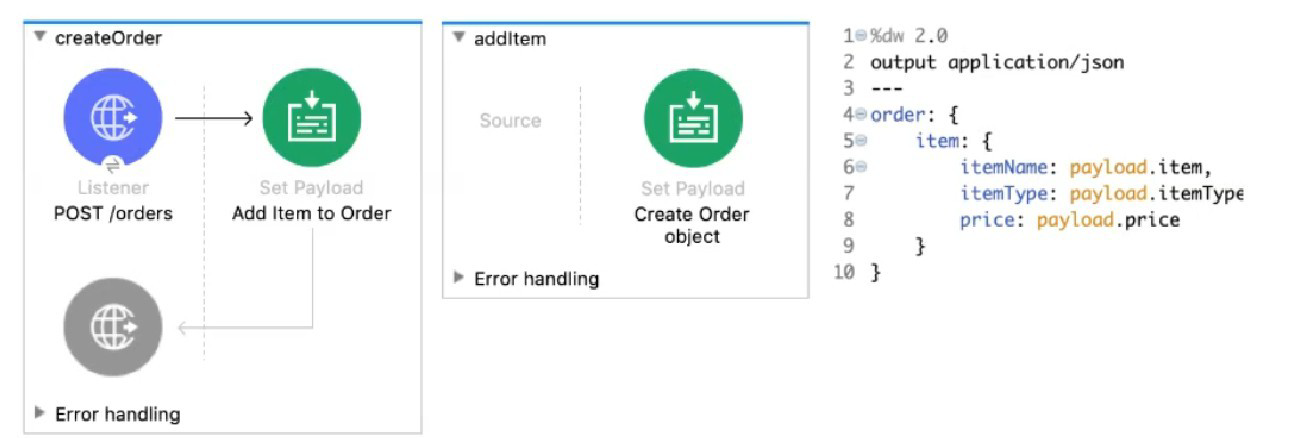
A. lookup( "addltern", { price: "100", item: "router", itemType: "cable" } )
B. addltem( { payload: { price: "100", item: "router", itemType: "cable" > } )
C. lookup( "addltem", { payload: { price: "100", item: "router", itemType: "cable" } > )
D. addltem( { price: "100", item: "router", itemType: "cable" } )
Which Mule component provides a real-time, graphical representation of the APIs and mule applications that are running and discoverable?
A. API Notebook
B. Runtime Manager
C. Anypoint Visualizer
D. API Manager
A Mule project contains a DataWeave module file WebStore dvA that defines a function named loginUser The module file is located in the projects src/main/resources/libs/dw folder
What is correct DataWeave code to import all of the WebStore.dwl file's functions and then call the loginUser function for the login "cindy.park@example.com"?
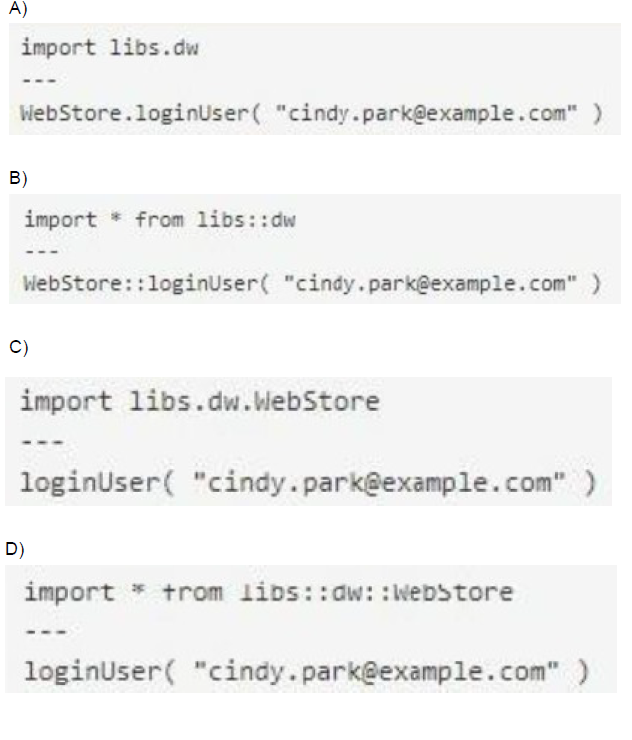
A. Option A
B. Option B
C. Option C
D. Option D
Which of the below functionality is provided by zip operator in DataWeave?
A. Merges elements of two lists (arrays) into a single list
B. Used for sending attachments
C. Minimize the size of long text using encoding.
D. All of the above
A web client submits a request to http://localhost:8081?accountType=personal. The query parameter is captured using a Set Variable transformer to a variable named accountType.
What is the correct DataWeave expression to log accountType?
A. Account Type: #[flowVars.accountType]
B. Account Type: #[message.inboundProperties.accountType]
C. Account Type: # [attributes.accountType]
D. Account Type: #[vars.accountType]
Explanation: vars: Keyword for accessing a variable, for example, through a DataWeave expression in a Mule component, such as the Logger, or from an Input or Output parameter of an operation. If the name of your variable is myVar, you can access it like this: vars.myVar Hence correct answer is Account Type: #[vars.accountType]
An API has been created in Design Center. What is the next step to make the API discoverable?
A. Publish the API to Anypoint Exchange
B. Publish the API from inside flow designer
C. Deploy the API to a Maven repository
D. Enable autodiscovery in API Manager
Explanation:
Correct answer is Publish the API to Anypoint Exchange
1) In private exchange for internal developers
2) In a public portal for external developers/clients

An On Table Row Database listener retrieves data from a table that contains record_id, an increasing numerical column. How should the listener be configured so it retrieves new rows at most one time?
A. Set the target to store the last retrieved record_id value
B. Set the ObjectStore to store the last retrieved record_id value
C. Set the target to the record_id column
D. Set the watermark column to the record id column
A web client submits a request to http://localhost:8081/books/0471767840. The value "0471767840" is captured by a Set Variable transformer to a variable named booklSBN.
What is the DataWeave expression to access booklSBN later in the flow?
A. booklSBN
B. attributes.booklSBN
C. flowVars.booklSBN
D. vars. booklSBN
Refer to the exhibit.
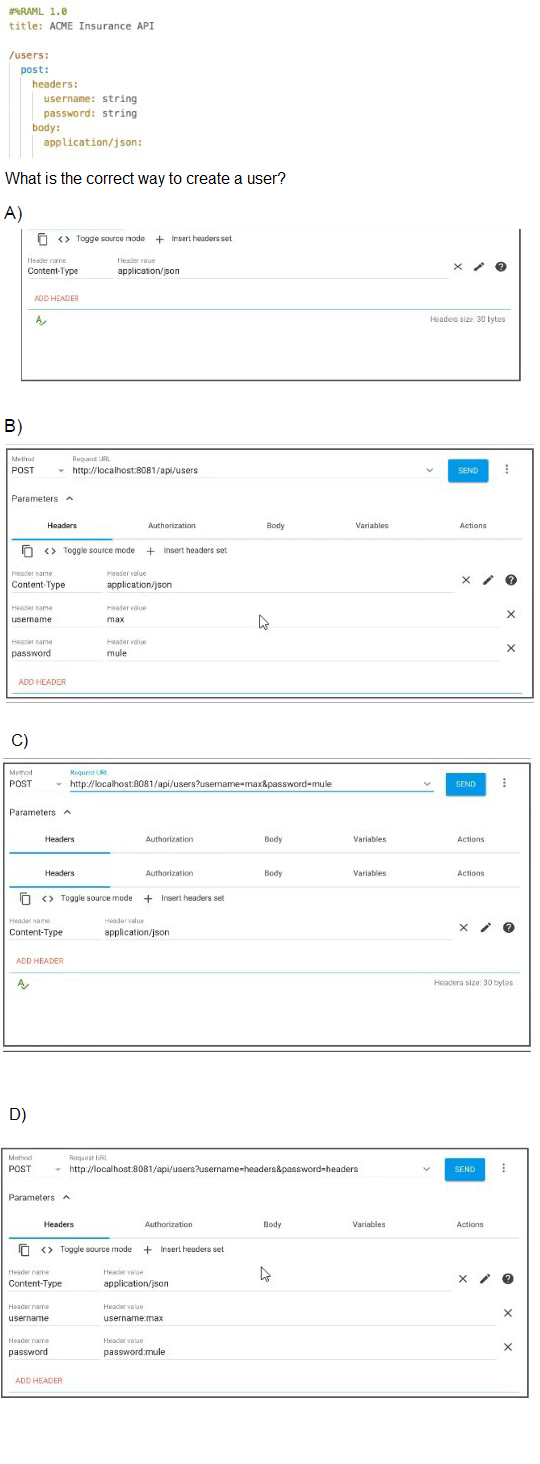
A. Option A
B. Option B
C. Option C
D. Option D
Refer to the exhibit.
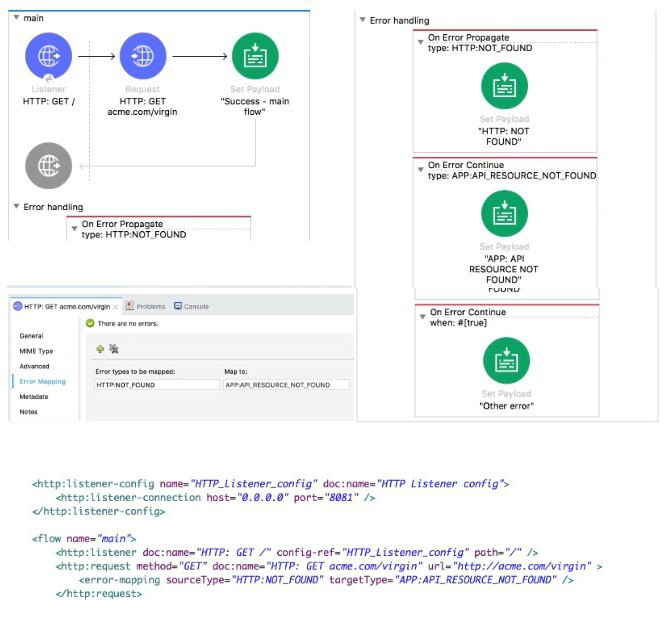
The main flow is configured with their error handlers. A web client submit a request to the HTTP Listener and the HTTP Request throws an HTTP:NOT_FOUND error.
What response message is returned?’’
What response message is returned?
A. APP: API RESOURCE NOT FOUND
B. HTTP: NOT FOUND
C. other error
D. success - main flow
Explanation:
Correct answer is APP: API RESOURCE NOT FOUND
1) A web client submits the request to the HTTP Listener.
2) The HTTP Request throws an "HTTP:NOT_FOUND" error, execution halts.
3) The On Error Propagate error Handler handles the error. In this case
,HTTP:NOT_FOUND error is mapped to custom error APP:API_RESOURCE_NOT_FOUND. This error processor sets payload to APP:API_RESOURCE_NOT_FOUND.
4) “APP:API_RESOURCE_NOT_FOUND. ” is the error message returned to the requestor in the body of the HTTP request with HTTP Status Code: 500
Refer to the exhibits.

The my-app xml file contains an Error Handier scope named "global-error-handler"
The Error Handler scope needs to be set to be the default error handler for every flow in the Mule application
Where and how should the value "global-error-handler" be added in the Mule project so that the Error Handler scope is the default error handler of the Mule application?
A. In the mule-artifact json file, as the value of a key-value pair
B. In the Validation folder as the value of a global element in the error-handling yaml file
C. In the pom.xml file, as the value of a global element
D. In the my-app.xml file, as an attribute of a configuration element
Refer to the exhibits.
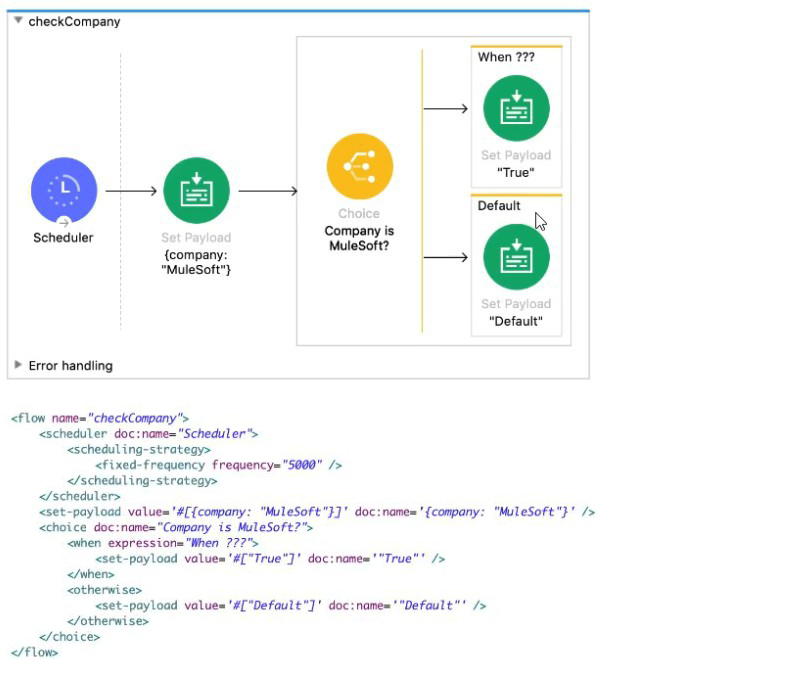
The
What is a valid
A. #['MuleSoft' == paytoad.company]
B. #[ company = "MuleSoft" ]
C. #[ if( company = "MuleSoft") ]
D. #[ if( 'MuleSoff == payload.company) ]
| Page 4 out of 20 Pages |
| Previous |